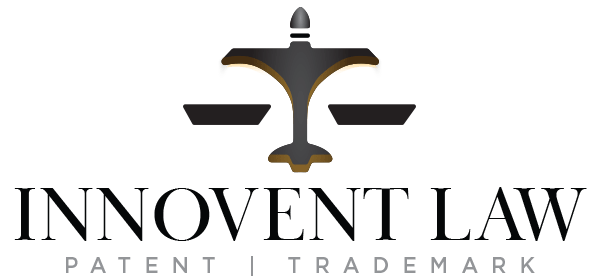Patent Monetizing Strategies Every Entrepreneur Should Know
Patents can be a game-changer for entrepreneurs, particularly in the tech industry. By protecting your intellectual property (IP), patents offer a way to monetize innovation, grow your business, and establish a competitive edge. This article explores proven strategies for patent monetization, drawing on real-world examples and actionable insights to help entrepreneurs make the most of their IP.

Licensing Your Patent
Licensing is one of the most popular strategies for monetizing patents. This approach allows patent owners to grant usage rights to other companies in exchange for royalties or upfront fees.
Why It Works: Licensing enables entrepreneurs to earn consistent revenue without manufacturing or marketing the product themselves. This model works especially well for tech companies that create foundational technologies.
Example: Qualcomm, a leading semiconductor company, licenses its patented mobile communication technologies to smartphone manufacturers worldwide. This strategy generates billions in annual revenue while maintaining Qualcomm’s focus on innovation.
Implementation Tips:
- Research potential licensees that can benefit from your patent.
- Decide between exclusive and non-exclusive licensing agreements.
- Structure royalties based on the licensee’s sales or usage volume.
Learn More: Use this patent licensing checklist to get started.
Selling Your Patent
For entrepreneurs who want immediate financial returns, selling a patent outright can be an effective strategy.
Why It Works: Selling eliminates the ongoing responsibility of managing the patent while providing upfront capital that can be reinvested in your business.
Example: Kodak sold many of its imaging technology patents to a consortium of tech giants, including Apple and Google. This deal provided Kodak with much-needed funds during its restructuring phase.
Implementation Tips:
- Conduct a professional valuation to determine the patent’s worth.
- Target companies that need your technology to complement their offerings.
- Negotiate terms that reflect the patent’s long-term potential.
Building Strategic Partnerships
Strategic partnerships leverage patents to create mutual benefits between businesses. By combining resources, companies can co-develop products and expand market reach.
Why It Works: This approach fosters collaboration, reduces risks, and accelerates innovation.
Example: IBM has entered partnerships with startups and established firms, using its vast patent portfolio to support co-development projects in AI and cloud computing.
Implementation Tips:
- Identify partners whose goals align with your innovation.
- Draft agreements that outline shared responsibilities and benefits.
- Focus on partnerships that add long-term value to your business.
Explore More: Learn how to manage your IP portfolio effectively.
Developing Products Using Your Patent
If you prefer to maintain control over your invention, use your patent to develop and sell products yourself.
Why It Works: This strategy lets you capitalize on the full market potential of your innovation while building your brand.
Example: Tesla uses its patented battery technology to create high-performance electric vehicles. By controlling the manufacturing and sales process, Tesla maximizes profitability and market influence.
Implementation Tips:
- Analyze market demand to ensure product viability.
- Invest in production capabilities or find reliable manufacturing partners.
- Create a robust marketing strategy to differentiate your offering.
Conducting Patent Enforcement
Protecting your patents from infringement ensures their value remains intact. Patent enforcement involves monitoring usage and taking action against unauthorized use.
Why It Works: Safeguarding your IP maintains exclusivity, deters competitors, and opens opportunities for legal settlements or licensing agreements.
Example: Samsung and Apple have engaged in patent litigation to protect their smartphone technologies. These disputes often lead to licensing deals or cross-licensing arrangements.
Implementation Tips:
- Regularly monitor the market for potential infringement.
- Work with a patent lawyer to address violations effectively.
- Consider alternative dispute resolution methods before resorting to litigation.
Get Help: Consult a professional about patent licensing.
A Checklist for Monetizing Your Patent
Here’s a step-by-step checklist to prepare for patent monetization:
- Evaluate Market Potential
- Identify industries that could benefit from your innovation.
- Assess the competitive landscape to find opportunities.
- Define Monetization Goals
- Are you seeking short-term revenue, long-term partnerships, or brand growth?
- Align goals with your overall business strategy.
- Research Potential Partners or Buyers
- Shortlist companies with a need for your technology.
- Verify their financial stability and industry reputation.
- Understand Legal Requirements
- Ensure your patent is enforceable and up to date.
- Account for USPTO fees and other costs.
- Prepare Supporting Documents
- Create a summary of your patent’s features and market relevance.
- Draft Non-Disclosure Agreements (NDAs) to protect your IP.
- Negotiate Agreement Terms
- Decide on exclusivity, royalty rates, and termination clauses.
- Work with a patent lawyer to formalize agreements.
- Monitor and Manage Agreements
- Track royalties, performance metrics, and compliance.
- Adjust terms if market conditions change.
Tips for Monetization Success
- Stay Flexible: Adapt to shifting market demands and trends.
- Focus on Value: Highlight how your patent solves real-world problems.
- Track Progress: Use key performance indicators to measure outcomes.
- Communicate Clearly: Keep partners informed and maintain strong relationships.
Monetizing your patent requires careful planning, market insight, and strategic execution. By leveraging these strategies, you can turn your innovations into sustainable revenue. For expert guidance, reach out to Innovent Law.
